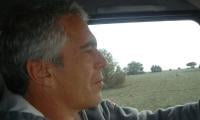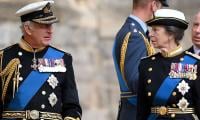Islamabad : A one-month summer camp for children in traditional skills: Block printing and Lacquer art started here at the Pakistan National Museum of Ethnology (Heritage Museum) on Tuesday. The objective of the camp is to promote folk crafts and to create awareness among younger generation, particularly children about the indigenous cultural heritage of Pakistan.
A total of 54 children (age group: 5 to 14 years) are attending the camp and getting training in these two crafts under master artisans from Punjab and Khyber Pakhtunkhwa provinces.
Talking to media, Executive Director, Lok Virsa Ms. Shahera Shahid informed that her institution is holding children summer camps every year during summer vacations.
The Lok Virsa has already organized four summer camps from 2015 to 2018 in regional languages and traditional skills. This is the fifth camp that we are conducting from 25th June to 23rd July 2019, she added.
There are three periods in the summer camp, the first period focuses on the history of craft, second on practical work and the third on storytelling, folk music and drawing. Cultural experts, folk artists and folk musicians have been invited to interact with children and apprise them about the culture of the country in a highly meaningful manner. Summer camp's timings are 10 am to 1 pm (Tuesday to Friday).
The summer camp will conclude with a prestigious ceremony scheduled to be held on 23rd July 2019 at 3 pm at Lok Virsa Heritage Museum wherein certificates will be issued to the participating children in full view of the media.
The ceremony will also feature live performances by child folk artists representing different provinces and regions.
Block printing in Pakistan evolves at an early date because the most ancient techniques are still practiced. The art of dyeing developed at the time of Indus valley civilization. In the 1st century, terracotta stamps used for printing textiles were excavated in Taxila.
Punjab, the largest populated province appeared as remnants of craft that so widespread that most villages had their own block printers. Lahore, remains one of the largest commercial centres in block printing. Heavy fabric printed for upholstery and drapery are marked widely.
The block prints depict animals, birds and floral patterns in arched frames with traditional colour combinations of Mughal architecture.
Most of the contemporary block printers apply the colour directly with print blocks made of hard wood such as sheesham. The basic colours are red, blue, green and yellow. After completing the outline, filling is done by selected shades.
Lacquer art forms an intrinsic part of Pakistani folk crafts. It involves the process of applying layers of "lac" in different colours on wood, while the material is rotated on a simple wooden lathe machine.
Patterns are etched on the surface, exposing each colour according to the requirements of traditional patterns. A variety of designs in monochromatic or contrast colour schemes may be achieved in lacquer work. The decoration is generally geometric or stylized floral often based on a geometric grid.
The design consists of a grooved pattern of lines, circles and dots. The established traditional artisans are based in Multan, Khushab, Dera Ghazi, Chiniot and Silanwali in Punjab, Dera Ismail Khan in Khyber Pakhtunkhwa and Hala in Sindh.















